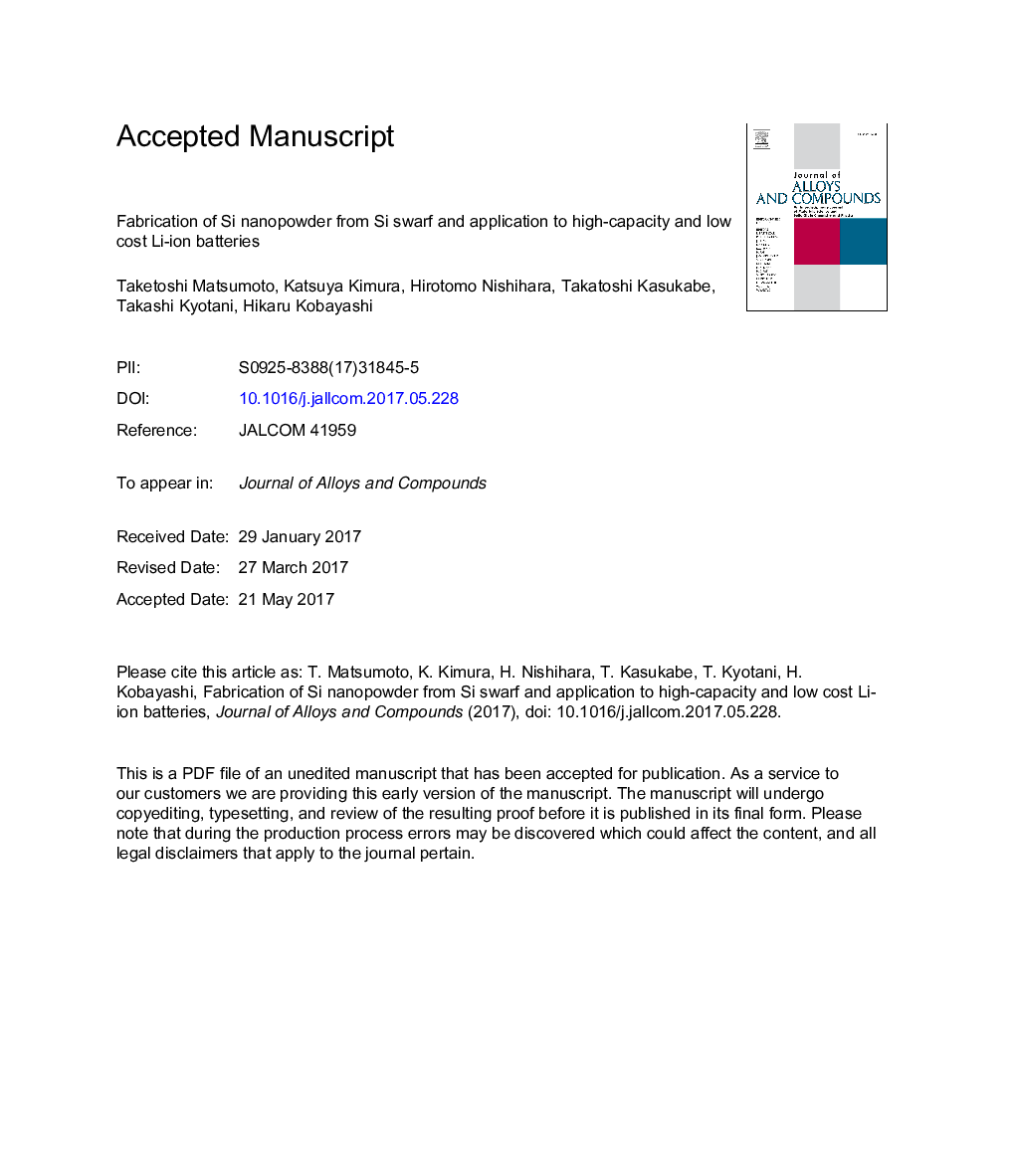| کد مقاله | کد نشریه | سال انتشار | مقاله انگلیسی | نسخه تمام متن |
|---|---|---|---|---|
| 5458486 | 1516174 | 2017 | 62 صفحه PDF | دانلود رایگان |
عنوان انگلیسی مقاله ISI
Fabrication of Si nanopowder from Si swarf and application to high-capacity and low cost Li-ion batteries
دانلود مقاله + سفارش ترجمه
دانلود مقاله ISI انگلیسی
رایگان برای ایرانیان
کلمات کلیدی
موضوعات مرتبط
مهندسی و علوم پایه
مهندسی مواد
فلزات و آلیاژها
پیش نمایش صفحه اول مقاله

چکیده انگلیسی
Si nanopowder is expected as a high capacity anode active material for Li-ion batteries (LIBs) due to its superior theoretical capacity of â¼3600Â mAÂ h/g, which is approximately one order of magnitude higher than that of conventional graphitic materials. We have succeeded in fabrication of Si nanopowder from Si swarf using the cost-effective beads milling method. The Si nanopowder consists of Si nano-crystals having flake-like shape with two largely different sizes, i.e., several hundred nm sizes and sizes less than 15Â nm. The mode diameter of Si crystallites fabricated from Si swarf is 6.3Â nm. The performance of the nano-Si electrode for Li ion batteries is greatly improved by carbon-coating on Si nanomaterials and addition of fluoroethylene carbonate (FEC) in an electrolyte solution. By addition of 10-15Â wt% FEC, a stable and thin (10-20Â nm) solid-electrolyte interphase (SEI) layer is formed on the electrode, and the number of cracks on the electrode surfaces after the 100th cycle greatly decreases. Addition of FEC improves the cyclability and decreases the SEI resistance (RSEI) and the charge transfer resistance (Rct). However, excess FEC (25Â wt%) suppresses free volume expansion of Si nanopowder due to formation of thick SEI, leading to smooth Si surfaces, and resulting in an increase in Rct. Carbon-coating on Si nanopowder greatly improves the cyclability even with the low C/Si ratio of 0.1. In the case of excess carbon-coating, Si nanopowder agglomerates during carbon-coating, which causes peeling-off of a part of carbon-coated Si nanopowder during lithiation, resulting in a decrease of the capacity. The delithiation capacity higher than 1600Â mAÂ h/g after the 100th cycle with the current density of 1800Â mA/g is achieved by setting the C/Si ratio at 0.1 and the FEC concentration at 10Â wt%.
ناشر
Database: Elsevier - ScienceDirect (ساینس دایرکت)
Journal: Journal of Alloys and Compounds - Volume 720, 5 October 2017, Pages 529-540
Journal: Journal of Alloys and Compounds - Volume 720, 5 October 2017, Pages 529-540
نویسندگان
Taketoshi Matsumoto, Katsuya Kimura, Hirotomo Nishihara, Takatoshi Kasukabe, Takashi Kyotani, Hikaru Kobayashi,